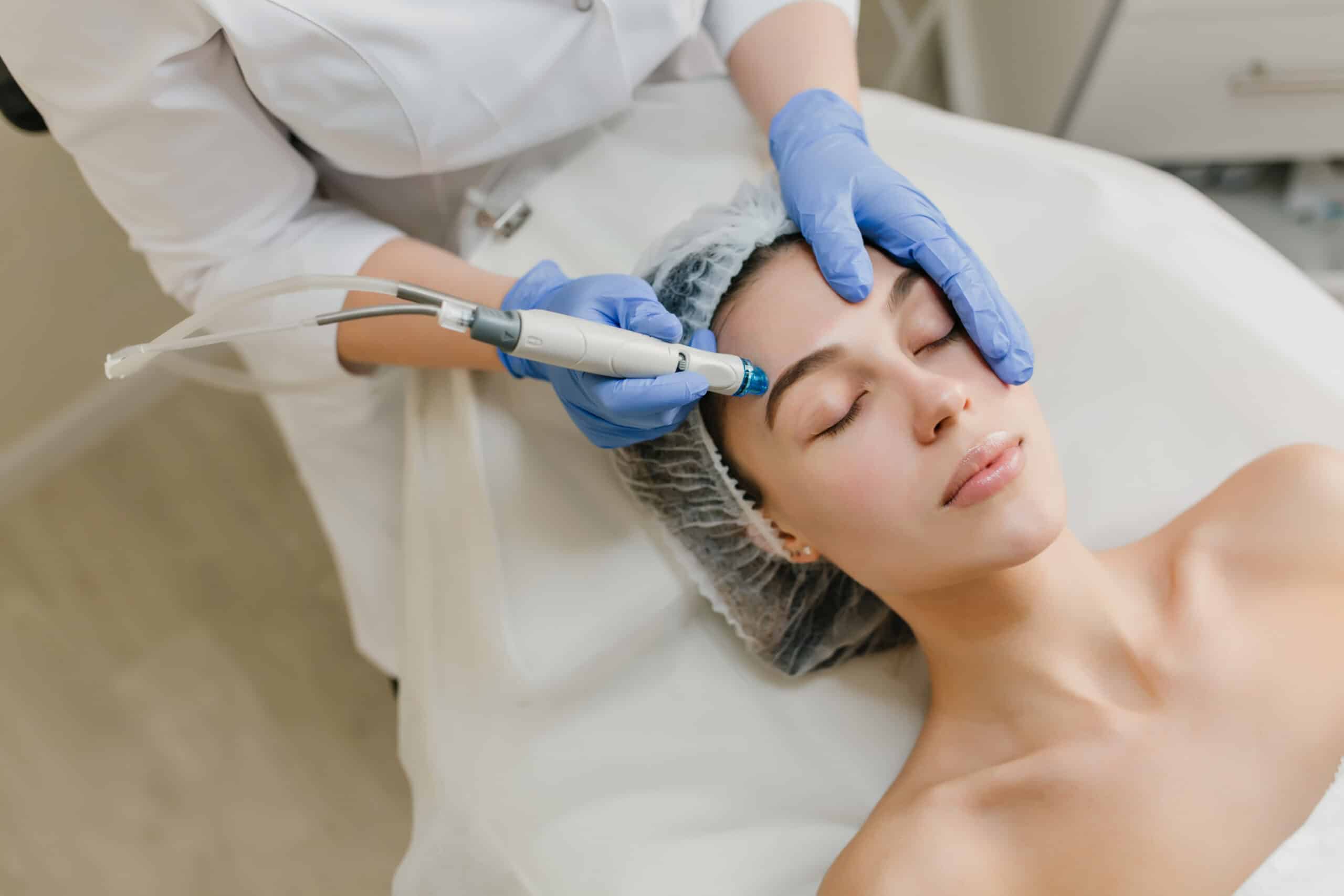Care after hair transplant is essential for the optimum growth of the hair follicles at a later date. Most of the care is needed only for first 7 days. This section here is a brief overview of what you need to do to maintain the planted area for 7 days after the hair transplant. *Detailed post hair transplant booklet is provided by the clinic to the patient after the hair transplant. Basic principles are: Care of the recipient area i.e, the grafts which are planted and care of the donor area, i.e the area from where the grafts are obtained. None of this is rocket science and is to be done only for about 7 days after the hair transplant. Most of the patients don’t find any difficulty in following the guidelines of care.
Management of the recipient area after hair transplant:
Using Sterile Saline or RL (Ringer’s Lactate solution)
Sterile saline or Ringer’s lactate solution (RL) is sprayed every 30 minutes for 2 days. This has a distinct advantage. It keeps the area moist. If the area becomes dry after the hair transplant, there will be a lot of itching in the area. The scabs which form would be adherent and everything will become messy. Apart from this for graft have a higher survival chances if they kept moist for 1-2 days.
Using shaving foam
Shaving foam is technically a very mild moisturizing soap which is ideal for cleaning the recipient site. There is no preference to which kind of shaving foam to be used. Routine non perfumed shaving foam is good. This is done thrice in a day for first 7 days.
Performing a head bath
Head bath is started from the 7th day after the procedure. On this day the grafts are adhered to the skin in a stronger way. Even though grafts won’t come out now, be gentle over the area.
Management of the Donor Area:
Dressing the Donor area
After the procedure, the donor area is wrapped up in bandage and cotton pads. This is removed the next day by the doctor in the clinic. After removal of the bandage, no additional bandaging is required for the donor area again. There will be soaking of this area for a day of two. This is normal.
Application of the antibiotic ointment
Antibiotic cream like T-Bact cream or Neosporin Skin Ointment is usually prescribed after the procedure. This is applied to the donor area from second day thrice a day. It is continued till day 7 after the procedure.
Care of scabs in donor area
For first few days there will not be much scabbing in the donor area. After 3-4 days, small scabs start to form in the donor area. Scabs fall off by themselves and are not to be removed by hand. In 7 days the wound over the donor area is completely healed.
Washing the donor area
As head bath is avoided for first 6 days, donor area should be cleaned with wet cloth for first 6 days. As scabs take 1-2 days to form completely, soap is to be avoided in this area for first 2 days. After 2 days, shampoo should be used to clean the area.
Important issues you must know after your hair transplant
Pain
Most patients of hair transplantation, report very little of no pain after the transplant. Pain killers like combiflam or emanzen D are usually prescribed by the doctor. Even if pain occurs, usually occurs after touching the donor area. This is absolutely normal.
Lost Grafts
It is not uncommon to lose a few grafts after the procedure. Do not be concerned, this is expected.
Swelling
If there is significant swelling, it usually occurs around the 2nd to the 5th day post-op. The swelling usually begins at the hairline and then, from gravity, it gradually moves down the forehead and settles into the bridge of the nose and around the eyes. Occasionally, it may lead the eyelids to swell shut for a short period of time. Sometimes the swelling is extreme, but it always resolves by itself after a few days and does not require any special treatment. It should not be a cause for concern. You can place cool compresses or ice covered with cloth over the area that is swollen, as long as it is not placed over the grafts. Sleep with your head raised at a 45-degree angle for the first 3 nights after the procedure; this may help to prevent swelling. You can use a recliner chair or 3-4 pillows. If the swelling is associated with redness, pain, tenderness, fever or chills, it may indicate an infection. If any of these symptoms occur, please call our clinic.
Activity, alcohol and other restrictions
The day after your hair transplantation, take it easy. You will be tired after your surgery. If possible, spend this day at home, or in a comfortable place, and concentrate on following the post-op instructions. You may perform normal daily activities the second day following the procedure including mild exercise. Lifting heavy weights and activities which cause sweating are strictly avoided for first 10 days. Abstain from alcohol for at least 7 days following the procedure. For the first 10 days, you should avoid any activities that rub or put direct pressure on your scalp. After 10 days, you may resume your normal daily activities and exercise.
Smoking
Smoking causes constriction of blood vessels and decreased blood flow to the scalp, predominantly due to its nicotine content. The carbon monoxide in smoke decreases the oxygen carrying capacity of the blood. These factors may contribute to poor wound healing after a hair transplant and can increase the chance of a wound infection and scarring. Smoking may also contribute to poor hair growth. The deleterious action of smoking goes away slowly when one abstains, particularly in chronic smokers, so that smoking puts one at risk to poor healing even after smoking is stopped for weeks or even months. Although it is not known exactly how long one should avoid smoking before and after a hair transplant a common recommendation is to abstain from 1 week prior to surgery to 2 weeks after the procedure.
Itching over the recipient area
Itching over the recipient as well as donor area is very common. It is well tolerated by most patients and does not need any special treatment. Itching occurs as the wound is trying to heal. However with itching comes scratching. If the grafts are scratched, they are bound to get dislodges from the recipient area. If itching is distressing, the recipient area can be gently touched or petted with the tips of finger very gently. This suppresses itching sensation. Also if sterile saline and shaving foam applications are done properly, itching will be minimal.
Sun exposure
Please avoid unprotected exposure to sunlight for 1 month. Wear a cap when you are going to be outside. After two weeks you may use a sunscreen with a SPF of 30+.
Hair colouring
Hair colouring or application of dyes can be started after a month after the transplantation.
Numbness
Numbness, tingling or similar sensations may occur temporarily on your scalp. These are the results of cutting small nerve endings in the skin during the course of harvesting the donor grafts and creating the recipient sites. This generally disappears within a few weeks to months, as nerve endings re-grow.

